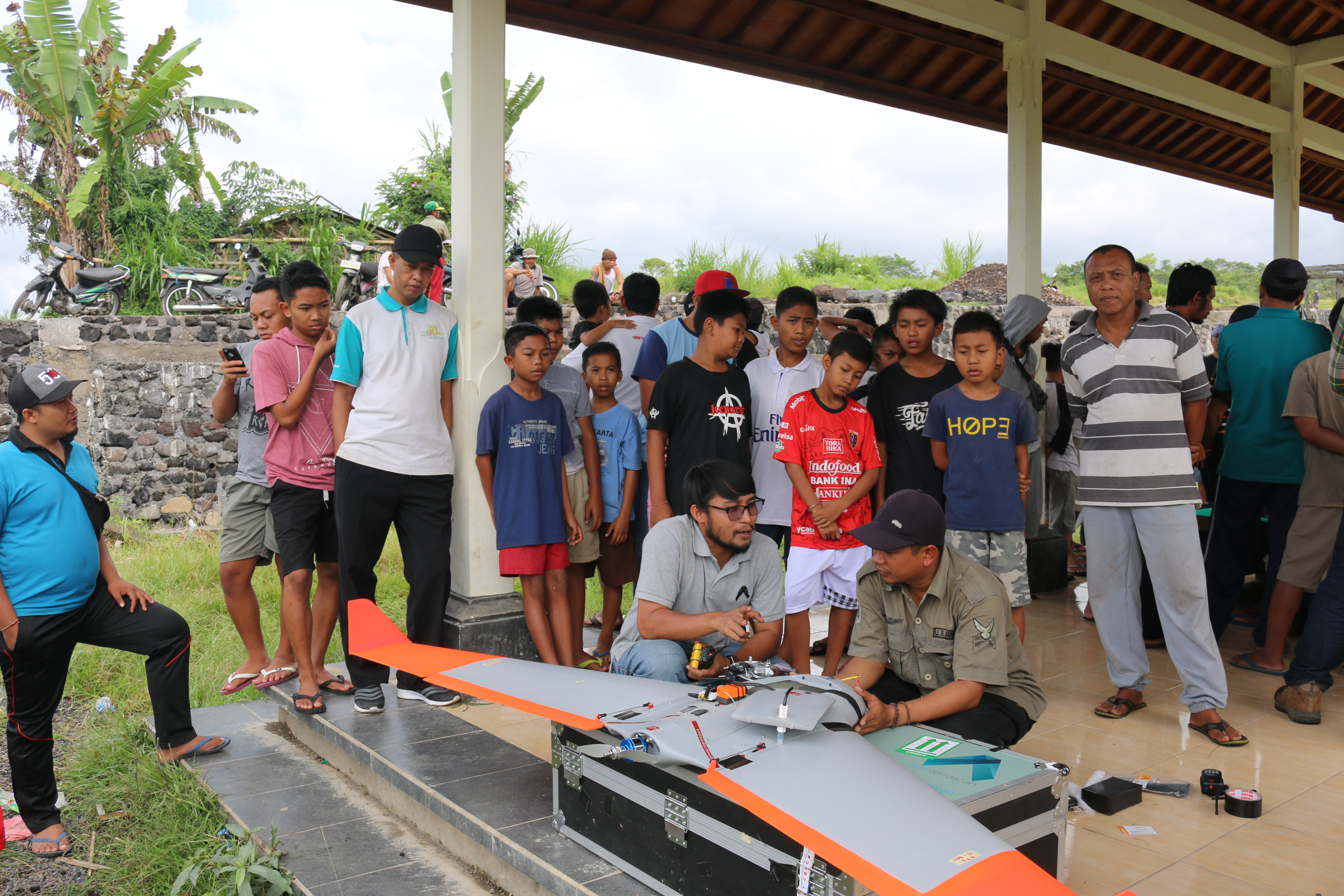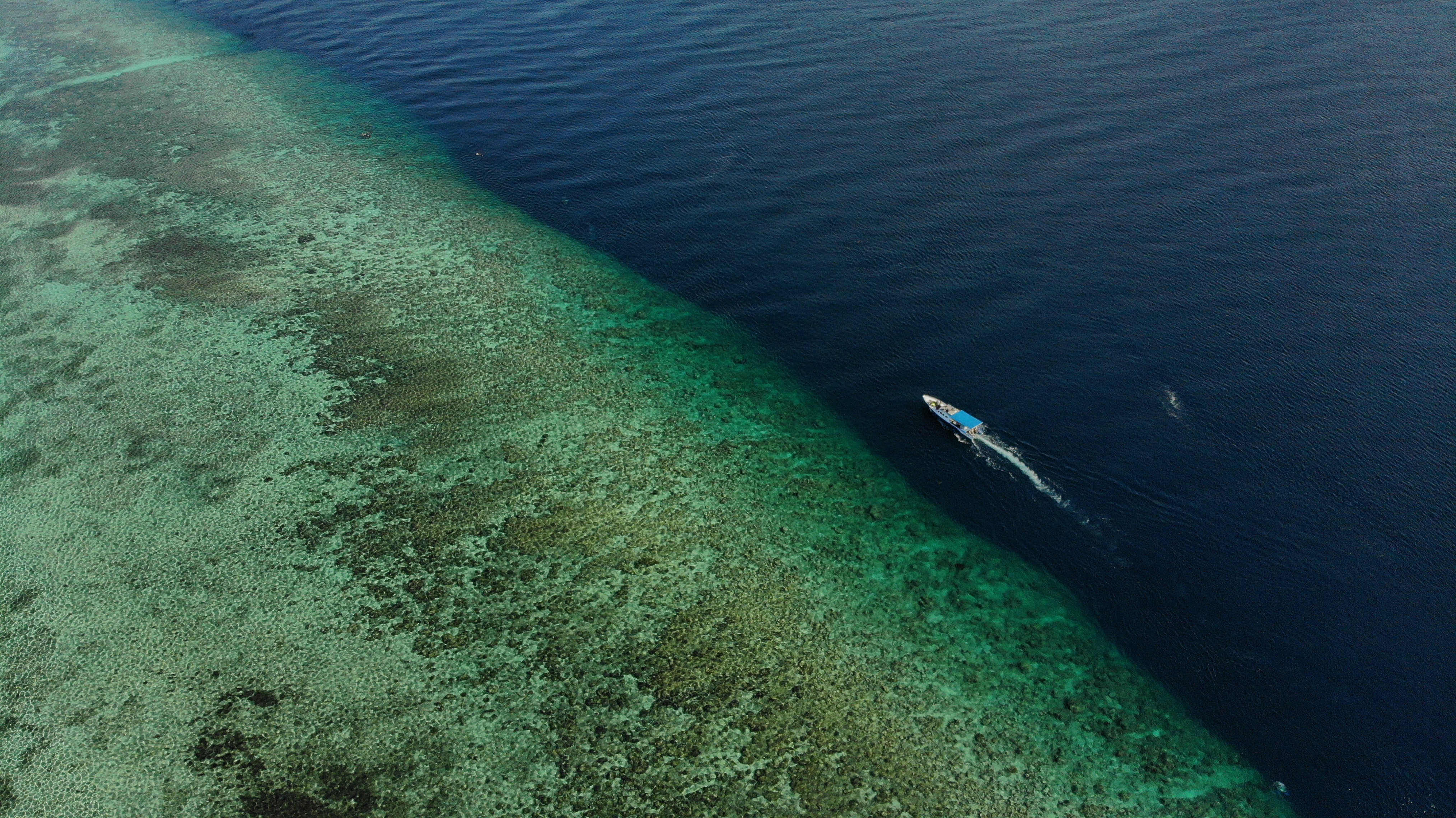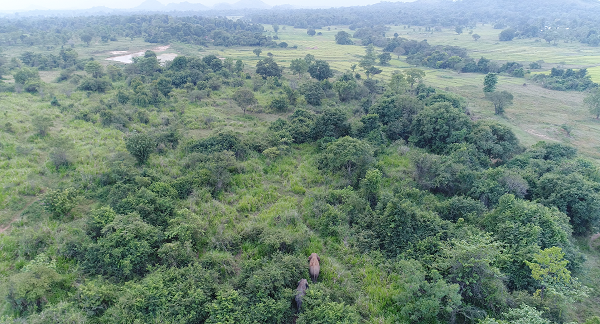Drones at the Edge of Naturecultures
 Monday, June 24, 2019 at 6:00PM
Monday, June 24, 2019 at 6:00PM Adam Fish
[ PDF Version]
Introduction
While there is applaudable emphasis on platform affordances within critical media and science and technology studies, many scholars often leap over technicalities and practices in a rush towards critiques of the discursive aspects of new technologies. Constructivism and idealism often dominate materialism and realism. Scholarship on drones offers an excellent example of this hasty insistency on arriving at interpretations of ideology before, and to the neglect of, close technical and practical investigations into the drone’s software, hardware, regulations, flight practices, interactions with physical states, and myriad uses in civilian and scientific arenas. Merely the presence of the term drone causes sudden movements towards writing graphic descriptions of the scopic regimes and barbarism of war. Several chapters in the otherwise excellent Life in the Age of Drone Warfare conflate consumer and military drones, for example.[1] But today drones are more likely to be involved in “killing it” on YouTube than killing enemy combatants.
There are many species of drones spanning a diverse range of costs, abilities, and degrees of sophistication. Nevertheless, media scholars of drones neglect this reality, conflating military and consumer drones, in theory and practice, and in the process they ignore the many ways these technologies come into being in relation to diverse environments and applications. Indeed, drones offer abundant opportunities for atmospheric exploration and terrestrial documentation. As I hope to illustrate with examples from recent fieldwork, drones are deployed at the edges of places and the peripheries of what is known—the edges of forests and coral reefs, as well as the tops of volcanoes. As elevated networked sensors, drones work the atmospheric edge of the global information infrastructure, expanding the internet literally into vertical space. One may argue that this edgework is the labor of enclosure, transforming the atmospheric commons into capital. This political economic critique is not the goal of this short article. Rather, it begins ontologically—almost naively—by investigating the relationships between drones flying at the edges of natures and networks.
In this article, I turn to German media scholar Fredrich Kittler and his materialistic ontology of technical media. According to Kittler, philosophy did not merely comment on phenomena; its insights were themselves determined by the means of philosophical production— alphabetical systems, writing utensils, the furniture of printing presses. In a Kittlerian framework, what we think of as drone ontology is structured by what the drone allows us to do, see, and collect vertically from the atmosphere. We must focus on the hardware of transmission and storage and the eclipse of distance in order to understand computing technologies. Kittler connects technical media’s properties and potentials—its affordances—to practices such as reading, writing, coding, re-coding, recording, deleting. He does this to emphasize media materiality and to highlight practices with technical media in space and time. He takes issue with how ontology and media technologies are mutually exclusive in the history of philosophy. Instead, ontology and technology should be seen in their “togetherness or concrescence.”[2] Kittler’s techno-ontological emphasis on “distances, transmission, and media” aligns with the mechanical operations of drones and invites us to meditate on edges, limits, boundaries, and breaks. Drones are aero-mobile, optical, and networked sensor systems. Drones are objects manufactured to eclipse distance, transmit commands, receive data, and store information. They are designed to go with convenient mobility where we cannot: that is, into the atmosphere. But this is not a sufficiently sophisticated framework, I would argue, with which to understand drone ontology. We must also consider how the drone’s ontology occurs at the edges of what is known. Finally, how the drone conditions ecologies must be considered along with the technical media’s potentialities.
In network theory from computer science, nodes denote points where two or more lines come together. Lines that never overlap with another line are termed edges, which are considered to be lines whose parameters and qualities are less understood. The peripheral edges do not reinforce the centralized robustness and redundancy of the network. Thus to work the edge in computer-based ethnographic work is to examine and transgress the boundaries of congestions. Edgework is inherently ontological, dealing with the ways networks are, become, and unfold in relationship to constraints, affordances, and possible flows.[3]
As an example of the constraints and affordances of the drone’s ontology, consider how atmospheric verticality limits and makes possible certain modes of mobility and visuality. The drone’s spatial movements provide novel or otherwise impossible optical perspectives. Historically, we can consider French photographer Félix Nadar’s hot air balloons, which sent cameras vertically in 1866 offering broad and flattened views of Paris.[4] The heated air in a such a balloon creates ascension, and darkroom chemicals give exposure to the image. The cost of balloons and the danger of helicopters has negated the democratization of this atmospheric art—that is, until the drone opened up this new aesthetic possibility with relatively affordable and easy-to-use technology. In turn, the view from above provides exemplary scale and context, allowing for the optical analysis of spaces, landscapes, infrastructures, and other vast hyperobjects—entities such as climate change, evolution, and the internet that are beyond our conceptualization and control.[5] In this manner, drones, like hot-air balloons, explore and examine the peripheries of what is known and knowable.
To more accurately understand the atmosphere as an affordance for technological ontologies that emerge in relationship with ecologies, consider how verticality makes possible humanitarian work. In February 2018 we exploited the vertical affordance of the atmosphere via drones in order to conduct humanitarian work on the Indonesian island of Bali when the Agung volcano began to erupt with gas, ash, and pyroclastic flows. Hundreds of thousands of villagers lived in the danger zone surrounding the volcano. Over seventy thousand were evacuated for months, leaving their farms, animals, and livelihoods behind. The leading drone manufacturer in Indonesia, a company called Aeroterrascan, volunteered its time and technology to monitor the volcano and, along with the US Geological Survey and Indonesian volcanologists, gather information about when to evacuate the island or shut down air traffic to Bali. Twice a month we flew a large and expensive fixed-wing drone around the crater to create three-dimensional maps that were used to ascertain the size of the volcano and, most importantly, whether the volcano was growing with explosive pressure. We used a unique particle sensor near the sky-high ash eruptions to gather information about the amount of carbon dioxide and other gases whose presence would signify a pending major eruption. The buoyancy created between the drone’s wings, propeller, and the atmosphere allowed us to collect data about the constitution of gases in the air. Our knowledge informed evacuations, the cancellation of flights into and out of Bali, and other measures taken to save lives. In this fashion, the drone, extended with data connectivity, cameras, and gas sensors, worked the edge of the living world, the global internet, and the realm of visibility above the Agung volcano.

Figure 1. Preparing the drone to monitor the Agung volcano.
In this manner, the drone is a networking thing that datafies externalities, incorporating objects into database logics, rendering nature and geological forces readable by optical technologies. As such, drones contribute to the proliferation of sensors—on the Earth, in the oceans, and in the atmosphere—in an attempt to create planetary-scale computational systems.[6] The elemental, vertical, and networked ontology of drones expands to include the “natural,” transmitting and storing biological and ecological information. In the process, nature is made digital and the network expands to include the periphery from the atmospheric and vertical perspective.
Consider research using historical satellite and drone images to map coral bleaching in the Bunaken Marine National Park in North Sulawesi, Indonesia. The high resolution images corroborate with satellite imagery and other data signals of coral bleaching to form a longitudinal and process-orientated depiction of coral bleaching.[7] My experiments with drone mapping contribute a higher resolution map that adds to this study of how climate change and ocean acidification are impacting coral reefs. Others continued that stratigraphic survey of the island of Bunaken, with drones and underwater cameras in the sea creating “sliced ecosystems” depicting the palimpsests from the air, land, and water and illustrating how over-tourism and over-fishing and other activities harm this fragile area.[8] Emphasizing technologies in their field research, the authors call drones “overview machines” and underwater cameras “detail generators.” Here an ecological approach aligns with an German media archaeological perspective to uncover the layers of intra-action between people, technologies, and ecologies. The drone links various edges: the underwater cliff of the reef, the boundary of digital connectivity at the shoreline, and the borders separating the earth, sea, and air.

Figure 2. Drone image of reef edge at Bunaken Marine National Park.
It’s not only relatively static hyperobjects like coral reefs that can be subjected by the ecological model, but also mobile megafauna. The Sri Lanka Wildlife Society is using drones and other air-based platforms—bees, tree houses, airborne citrus scents—to frighten elephants away from farmers’ fields, thereby mitigating the negative consequences of wild elephant and human conflict. In this manner, drones are becoming embedded within an ancient assemblage that includes hydrological infrastructure, climate change, elephants, the atmospheric elements, and humans in the Sri Lankan highlands. In the coral and elephant mitigation cases, the drone’s ontology becomes ecological. As a technology for the documentation of bleaching reefs and human-elephant conflicts, the drone’s ontology is formulated by the politics of documenting, transmitting, and storing images. It is a technology whose affordances are preconditioned for environmental witnessing and are also entangled with those beings who are being seen. The drone works the edge of another kind, the always already permeable boundary between natures and cultures, creating natureculture hybridizations of co-fated co-dependencies.

Figure 3. Elephants monitored by drone in Sri Lanka.
The drone does more than generate visual representations from the air. I would argue that the drone’s envisioning system is entangled with the objects it documents. To advance this point, I suggest the concept of witnessing. The notion of witnessing resonates with the mediation of death, dying, and danger. Media scholar Leshu Torchin mobilizes the term witnessing to describe the atrocious work of genocide documentaries.[9] For media scholar Emily West, witnessing frames and reveals the relationship between audiences and those willfully dying on television.[10] Journalism scholar Brian Creech critiques the labor of war reporters whose life is at risk in exchange for the audience bearing witness to the gruesome details of war-making.[11] In each of these cases, witnessing an end of life is a beginning of a dialogue about a future. The elements, verticalities, networks, and now ecologies of drone ontologies come into being through this witnessing.
In this short article, I have presented one aspect of a drone ontology as it comes into fruition at the edge of ecologies and networks. The drone has no essential nature; rather, its ontology is formed through mutually reinforcing atmospheric constraints, ecological possibilities, multi-species interactions, and human-generated ambitions. Other drone ontologies exist; the point is to be informed by but also to temper the techno-determinism of scholars such as Kittler while integrating the methods and insights from allied disciplines. Ontological speculation need not commit exclusive focus to technological affordances as numerous conditions converge towards the development of technological being. To understand the emergent novelty of the drone, it is necessary to superimpose these potentialities into a vertical stack of software, hardware, geographies, elements, ecologies, species, and states of mind.
Notes
[1] Lisa Parks and Caren Kaplan, eds., Life in the Age of Drone Warfare (Durham: Duke University Press, 2017).
[2] Fredrich Kittler, “Toward an Ontology of Media,” Theory, Culture, and Society 26, nos. 2–3 (2009): 23–31.
[3] Adam Fish and Luca Follis, “Edgework, state power, and hacktivists,” Hau: Journal of Ethnographic Theory 5, no. 2 (2015): 383–90.
[4] Félix Nadar, When I was a Photographer (Cambridge: Massachusetts Institute of Technology Press, 2015).
[5] Timothy Morton, Hyperobjects: Philosophy and Ecology after the End of the World (Minneapolis: University of Minnesota Press, 2013).
[6] Benjamin Bratton, The Stack (Cambridge: Massachusetts Institute of Technology Press, 2016); Jennifer Gabrys, Program Earth (Minneapolis: University of Minnesota Press, 2016).
[7] Eghbert Elvan Ampou, Sylvain Oillon, Corina Iovan, and Serge Andréfouët, “Change Detection of Bunaken Island coral reefs using 15 years of very high resolution satellite images: A kaleidoscope of habitat trajectories,” Marine Pollution Bulletin 131(2018): 83–96.
[8] Joerg Rekittke and Yazid Ninsalam, “Sliced Ecosystem: Modelling Transects of Vulnerable Marine Landscapes,” Journal of Digital Landscape Architecture 1 (2016).
[9] Leshu Torchin, Creating the Witness: Documenting Genocide on Film, Video, and the Internet (Minneapolis: University of Minnesota Press, 2012).
[10] Emily West, “Invitation to Witness: The Role of Subjects in Documentary Representations of the End of Life,” International Journal of Communication 12 (2018): 1481–1500.
[11] Brian Creech, “Bearing the cost to witness: the political economy of risk in contemporary conflict and war reporting,” Media, Culture & Society 40, no. 4 (2018): 567–83.
Adam Fish is a cultural anthropologist and video producer who investigates power in cultures of digital production. He is an interdisciplinary scholar who works across social science, computer engineering, and visual arts. He is currently writing a book, Drone Justice (MIT Press), based on four years of collaboration with over 70 civic drone pilots, engineers, entrepreneurs, inventors, scientists, and anti-drone activists in extreme locations around the world: e.g. volcanoes and coral reefs in Indonesia, wild elephant herds in Sri Lanka, and orca pods in the Puget Sound. The book investigates how drones transform the ecologies and inhabitants of the Earth. His co-authored book Hacker States (MIT Press, 2020, with Luca Follis) is about how state hacking impacts democracy. His book Technoliberalism (Palgrave Macmillan, 2017) describes his ethnographic research on the politics of internet and television convergence in Hollywood and Silicon Valley. His co-authored book After the Internet (Polity, 2017, with Ramesh Srinivasan) reimagines the internet from the perspective of grassroots activists, citizens, and hackers on the margins of political and economic power.